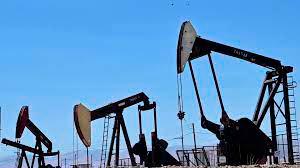HOUSTON: Oil prices rose on Monday (Sept 18) after flirting with US$95 a barrel earlier in the session, as expectations of a supply deficit stemming from extended output cuts by Saudi Arabia and Russia as well as weak shale production outweighed concerns about demand.
Global oil benchmark Brent crude futures settled 50 cents higher at US$94.43 (RM442.92) a barrel after rising as high as US$94.45. US West Texas Intermediate crude futures rose 71 cents to US$91.48 (RM429/08).
Saudi Arabia and Russia this month extended a combined 1.3 million barrels per day (bpd) of supply cuts to the end of the year.
Meanwhile, US oil output from top shale-producing regions is also expected to fall for a third month in a row in October to its lowest level since May 2023, the US Energy Information Administration said in a monthly report.
Saudi Arabia’s Energy Minister Prince Abdulaziz bin Salman on Monday defended Opec+ cuts to oil market supply, saying international energy markets need light-handed regulation to limit volatility, while also warning of uncertainty about Chinese demand, European growth and central bank action to tackle inflation.
Brent and WTI have climbed for three consecutive weeks to touch their highest since November and are on track for their biggest quarterly increases since Russia's invasion of Ukraine in the first quarter of 2022.
The Brent benchmark traded in overbought territory for a seventh straight session, while WTI traded in overbought territory for a fifth straight session.
The market was also seeing some profit-taking, said Dennis Kissler, senior vice president of trading at BOK Financial.
Citi on Monday became the latest bank to predict that Brent prices could exceed US$100 a barrel this year. Chevron chief executive Mike Wirth also said in a Bloomberg News interview he thinks oil will cross US$100 per barrel.
Saudi Arabia and Russia’s output cuts could lead to a two million bpd deficit in the fourth quarter, and a subsequent drawdown in inventories could leave the market exposed to further price spikes in 2024, ANZ analysts said.
China is a key risk because of its sluggish post-pandemic economic recovery, though its oil imports have remained robust.
A series of stimulus measures and a summer travel boom helped industrial output and consumer spending to rebound last month and Chinese refineries ramped up output, driven by strong export margins.
Eyes will also be on central banks this week, including an interest rate decision from the US Federal Reserve.
The Bank of England is likely to increase interest rates once again this week, possibly the last hurrah for one of the most aggressive tightening cycles of the past 100 years as a cooling economy begins to worry policymakers. – Reuters









